*NURSING > QUESTIONS & ANSWERS > Nursing MISC RN Fundamentals Practice Latest Updated With Complete Solutions (All)
Nursing MISC RN Fundamentals Practice Latest Updated With Complete Solutions
Document Content and Description Below
Hesi Fundamentals Practice Which drug does a nurse anticipate may be prescribed to produce diuresis and inhibit formation of aqueous humor for a client with glaucoma? Chlorothiazide (Diuril) Aceta... zolamide (Diamox) Bendroflumethiazide (Naturetin) Demecarium bromide (Humorsol) A client receiving steroid therapy states, "I have difficulty controlling my temper which is so unlike me, and I don't know why this is happening." What is the nurse's best response? Tell the client it is nothing to worry about. Talk with the client further to identify the specific cause of the problem. Instruct the client to attempt to avoid situations that cause irritation. Interview the client to determine whether other mood swings are being experienced. A client receiving steroid therapy states, "I have difficulty controlling my temper which is so unlike me, and I don't know why this is happening." What is the nurse's best response? Tell the client it is nothing to worry about. Talk with the client further to identify the specific cause of the problem. Instruct the client to attempt to avoid situations that cause irritation. Interview the client to determine whether other mood swings are being experienced. The nurse is caring for a client with a temperature of 104.5 degrees Fahrenheit. The nurse applies a cooling blanket and administers an antipyretic medication. The nurse explains that the rationale for these interventions is to: Promote equalization of osmotic pressures. Prevent hypoxia associated with diaphoresis. Promote integrity of intracerebral neurons. Reduce brain metabolism and limit hypoxia. A health care provider prescribes 500 mg of an antibiotic intravenous piggyback (IVPB) every 12 hours. The vial of antibiotic contains 1 g and indicates that the addition of 2.5 mL of sterile water will yield 3 mL of reconstituted solution. How many milliliters of the antibiotic should be added to the 50 mL IVPB bag? Record your answer using one decimal place. __ mL 1.5 The nurse is caring for a non-ambulatory client with a reddened sacrum that is unrelieved by repositioning. What nursing diagnosis should be included on the client's plan of care? Risk for pressure ulcer Risk for impaired skin integrity Impaired skin integrity, related to infrequent turning and repositioning Impaired skin integrity, related to the effects of pressure and shearing force 1 A client has a pressure ulcer that is full thickness with necrosis into the subcutaneous tissue down to the underlying fascia. The nurse should document the assessment finding as which stage of pressure ulcer? Stage I Stage II Stage III Unstageable A pressure ulcer with necrotic tissue is unstageable. The necrotic tissue must be removed before the wound can be staged. A stage I pressure ulcer is defined as an area of persistent redness with no break in skin integrity. A stage II pressure ulcer is a partial-thickness wound with skin loss involving the epidermis, dermis, or both; the ulcer is superficial and may present as an abrasion, blister, or shallow crater. A stage III pressure ulcer involves full thickness tissue loss with visible subcutaneous fat. Bone, tendon, and muscle are not exposed. A client is being admitted for a total hip replacement. When is it necessary for the nurse to ensure that a medication reconciliation is completed? Select all that apply. After reporting severe pain On admission to the hospital Upon entering the operating room Before transfer to a rehabilitation facility At time of scheduling for the surgical procedure Medication reconciliation involves the creation of a list of all medications the client is taking and comparing it to the health care provider's prescriptions on admission or when there is a transfer to a different setting or service, or discharge. A change in status does not require medication reconciliation. A medication reconciliation should be completed long before entering the operating room. Total hip replacement is elective surgery, and scheduling takes place before admission; medication reconciliation takes place when the client is admitted. A client is taking lithium sodium (Lithium). The nurse should notify the health care provider for which of the following laboratory values? White blood cell (WBC) count of 15,000 mm3 Negative protein in the urine Blood urea nitrogen (BUN) of 20 mg/dL Prothrombin of 12.0 seconds White cell counts can increase with this drug. The expected range of the WBC count is 5000 to 10,000 mm3 for a healthy adult. Urinalysis, BUN, and prothrombin are not necessary and these are normal values. Often when a family member is dying, the client and the family are at different stages of grieving. During which stage of a client's grieving is the family likely to require more emotional nursing care than the client? Anger Denial 2 Depression Acceptance In the stage of acceptance, the client frequently detaches from the environment and may become indifferent to family members. In addition, the family may take longer to accept the inevitable death than does the client. Although the family may not understand the anger, dealing with the resultant behavior may serve as a diversion. Denial often is exhibited by the client and family members at the same time. During depression, the family often is able to offer emotional support, which meets their needs. The client asks the nurse to recommend foods that might be included in a diet for diverticular disease. Which foods would be appropriate to include in the teaching plan? Select all that apply. Whole grains Cooked fruit and vegetables Nuts and seeds Lean red meats Milk and eggs With diverticular disease the patient should avoid foods that may obstruct the diverticuli. Therefore the fiber should be digestible, such as whole grains, and cooked fruits and vegetables. Milk and eggs have no fiber content but are good sources of protein. In clients with diverticular disease, nuts and seeds are contraindicated as they may be retained and cause inflammation and infection, which is known as diverticulitis. The client should also decrease intake of fats and red meats. A nurse is obtaining a health history from the newly admitted client who has chronic pain in the knee. What should the nurse include in the pain assessment? Select all that apply. Pain history, including location, intensity, and quality of pain Client's purposeful body movement in arranging the papers on the bedside table Pain pattern, including precipitating and alleviating factors Vital signs such as increased blood pressure and heart rate The client's family statement about increases in pain with ambulation Accurate pain assessment includes pain history with the client's identification of pain location, intensity, and quality and helps the nurse to identify what pain means to the client. The pattern of pain includes time of onset, duration, and recurrence of pain and its assessment helps the nurse anticipate and meet the needs of the client. Assessment of the precipitating factors helps the nurse prevent the pain and determine it cause. Purposeless movements such as tossing and turning or involuntary movements such as a reflexive jerking may indicate pain. Physiological responses such as elevated blood pressure and heart rate are most likely to be absent in the client with chronic pain. Pain is a subjective experience and therefore the nurse has to ask the client directly instead of accepting statement of the family members. While undergoing a soapsuds enema, the client reports abdominal cramping. What action should the nurse take? 3 Immediately stop the infusion. Lower the height of the enema bag. Advance the enema tubing 2 to 3 inches. Clamp the tube for 2 minutes, then restart the infusion. Abdominal cramping during a soapsuds enema may be due to too rapid administration of the enema solution. Lowering the height of the enema bag slows the flow and allows the bowel time to adapt to the distention without causing excessive discomfort. Stopping the infusion is not necessary. Advancing the enema tubing is not appropriate. Clamping the tube for several minutes then restarting the infusion may be attempted if slowing the infusion does not relieve the cramps. During the initial physical assessment of a newly admitted client with a pressure ulcer, a nurse observes that the client's skin is dry and scaly. The nurse applies emollients and reinforces the dressing on the pressure ulcer. Legally, were the nurse's actions adequate? The nurse also should have instituted a plan to increase activity. The nurse provided supportive nursing care for the well-being of the client. Debridement of the pressure ulcer should have been done before the dressing was applied Treatment should not have been instituted until the health care provider's prescriptions were received. According to the Nurse Practice Act, a nurse may independently treat human responses to actual or potential health problems. An activity level is prescribed by a health care provider; this is a dependent function of the nurse. There is not enough information to come to the conclusion that debridement should have been done before the dressing was applied. Application of an emollient and reinforcing a dressing are independent nursing functions. A visitor comes to the nursing station and tells the nurse that a client and his relative had a fight and that the client is now lying unconscious on the floor. What is the most important action the nurse needs to take? Ask the client if he is okay. Call security from the room. Find out if there is anyone else in the room. Ask security to make sure the room is safe Safety is the first priority when responding to a presumably violent situation. The nurse needs to have security enter the room to ensure it is safe. Then it can be determined if the client is okay and make sure that any other people in the room are safe To ensure the safety of a client who is receiving a continuous intravenous normal saline infusion, the nurse should change the administration set every: 4 to 8 hours 12 to 24 hours 24 to 48 hours 72 to 96 hours Best practice guidelines recommend replacing administration sets no more frequently than 72 to 96 4 hours after initiation of use in p [Show More]
Last updated: 1 year ago
Preview 1 out of 25 pages
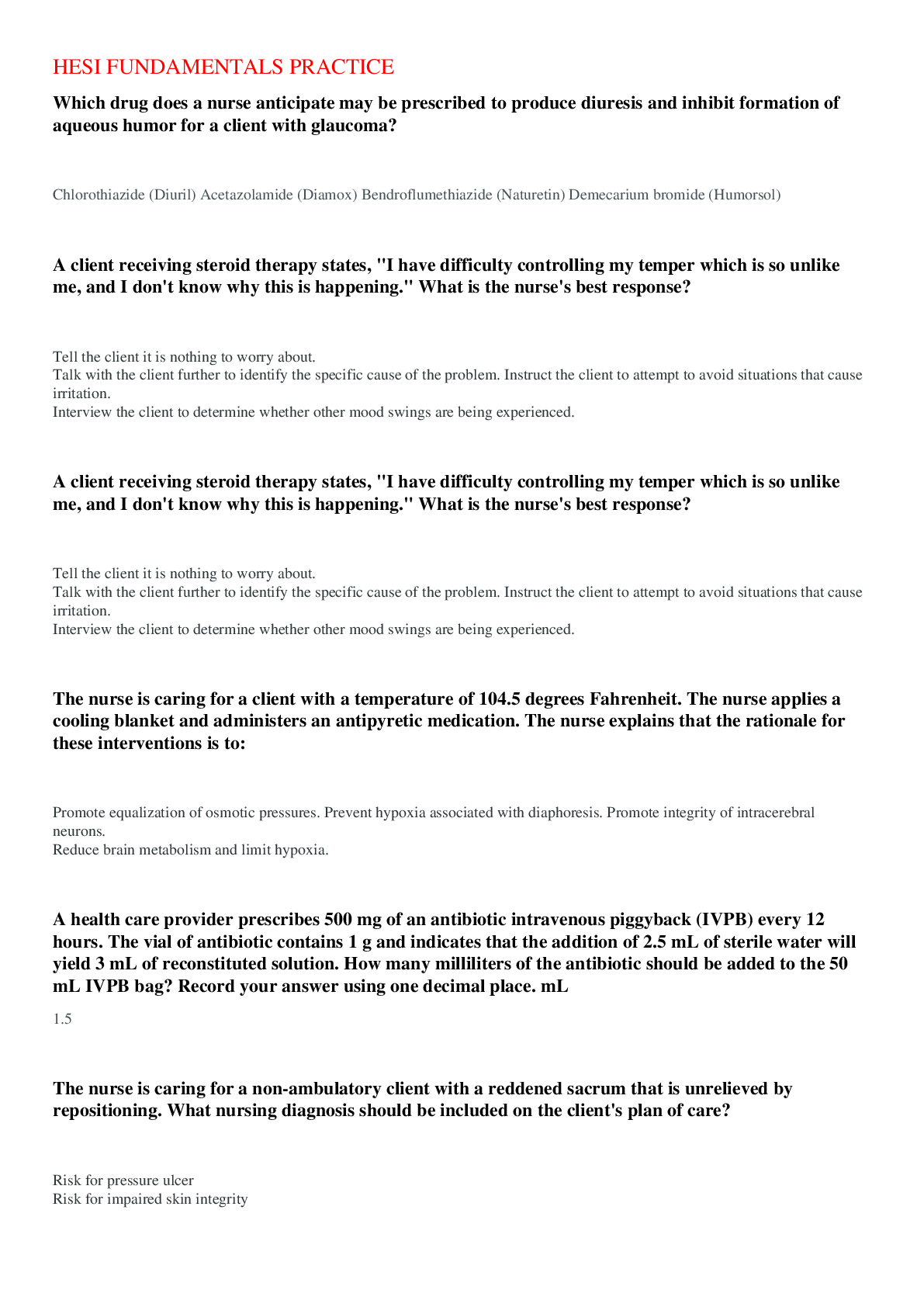
Reviews( 0 )
Document information
Connected school, study & course
About the document
Uploaded On
Apr 19, 2022
Number of pages
25
Written in
Additional information
This document has been written for:
Uploaded
Apr 19, 2022
Downloads
0
Views
57

.png)
.png)
.png)
.png)
.png)
.png)
.png)
.png)
.png)
.png)
.png)

.png)
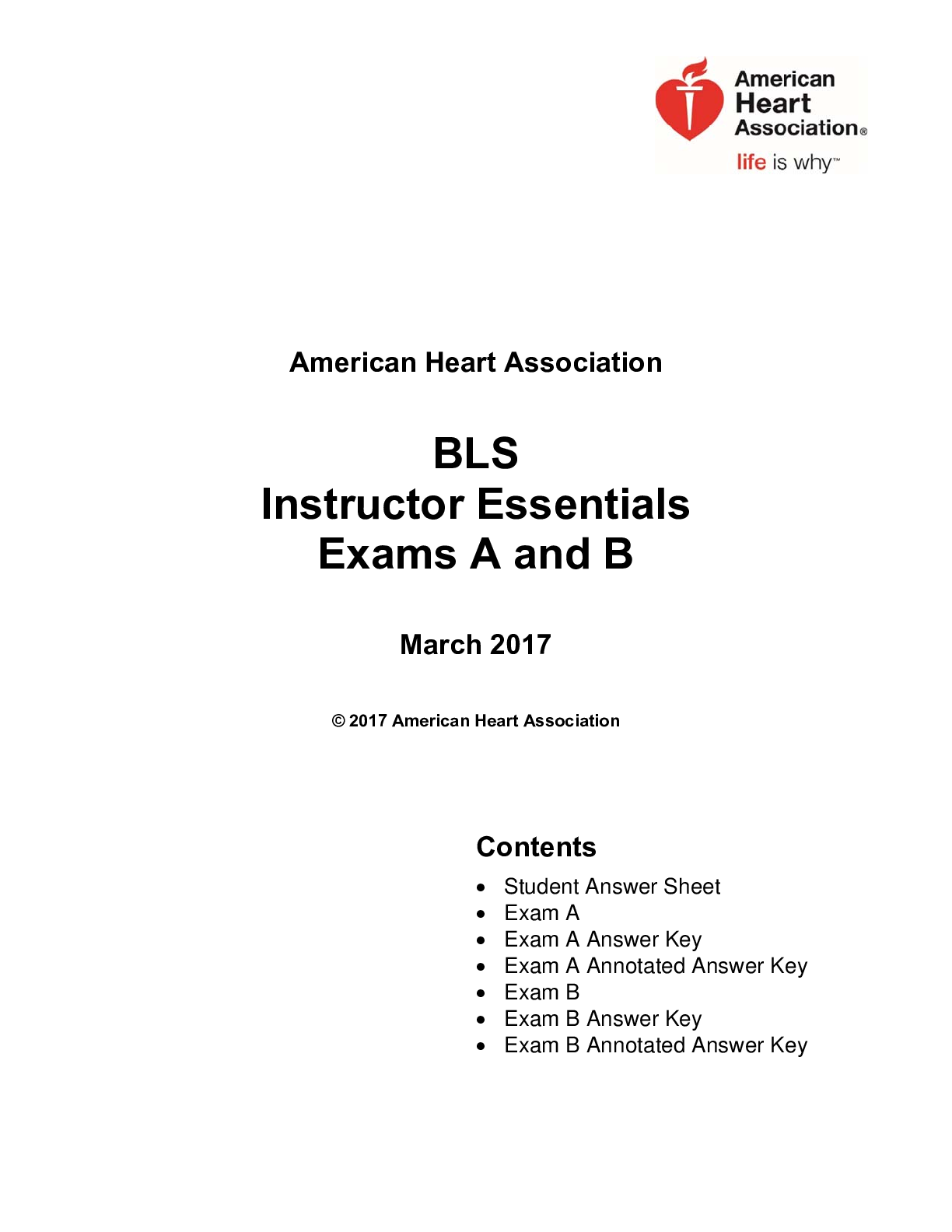
.png)
.png)
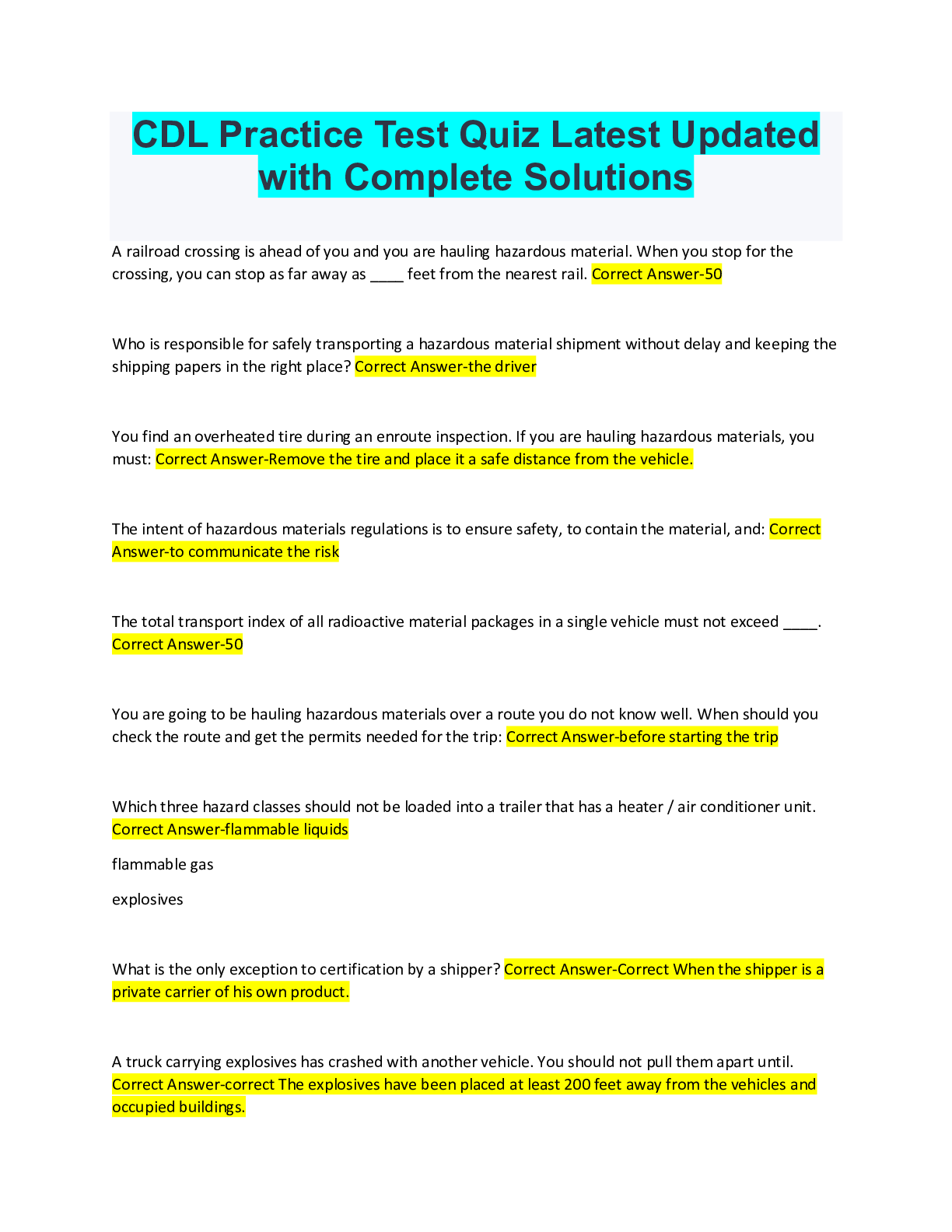
.png)
.png)
.png)
.png)
.png)
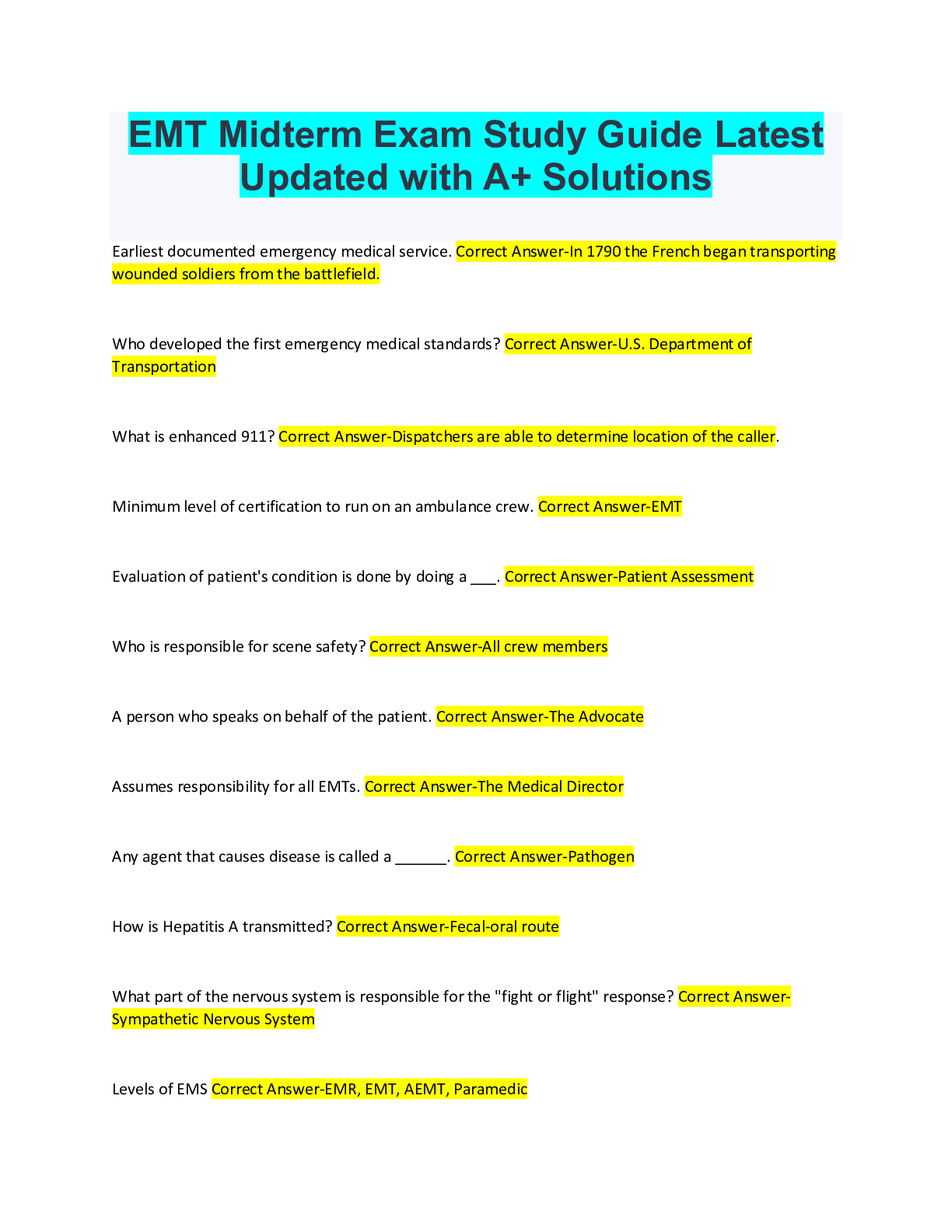
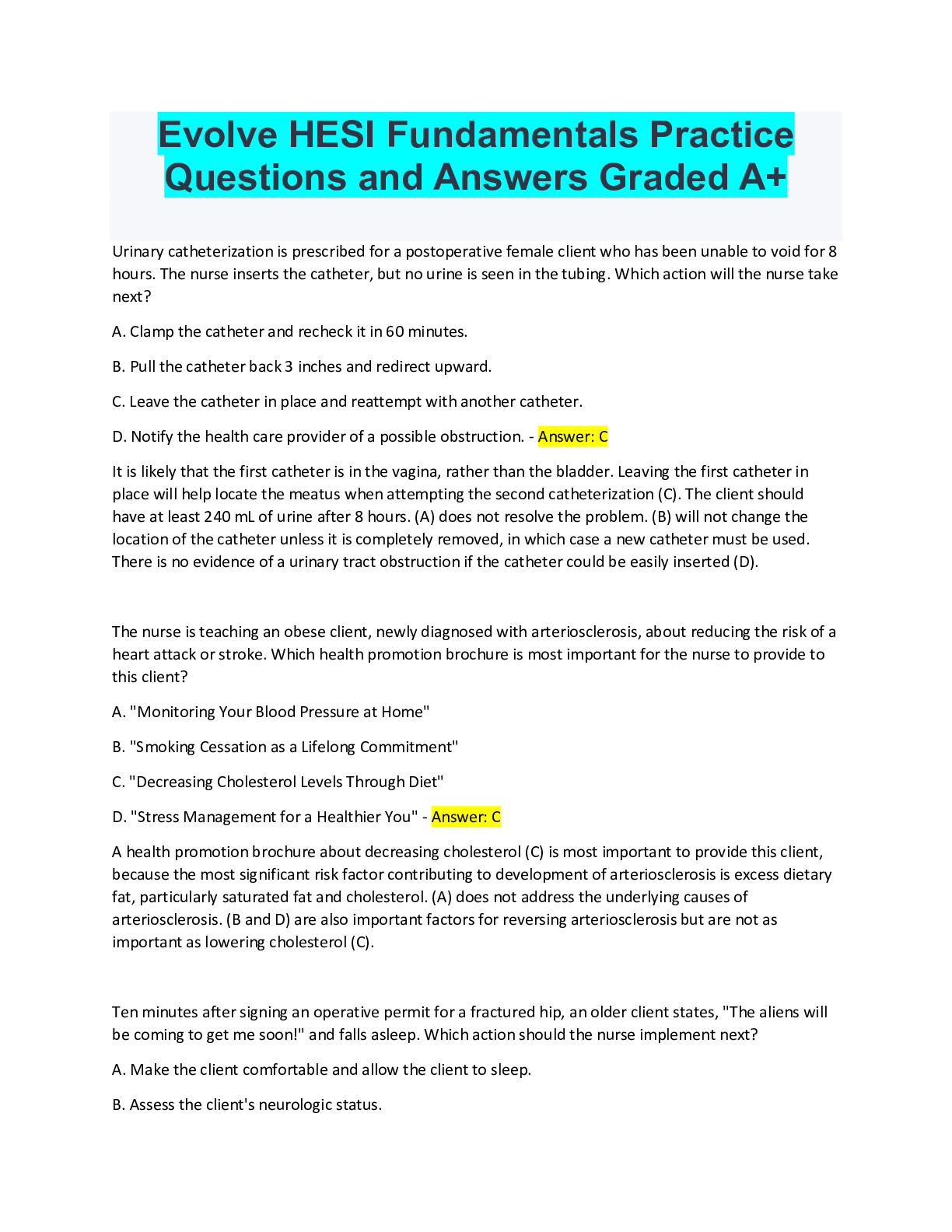

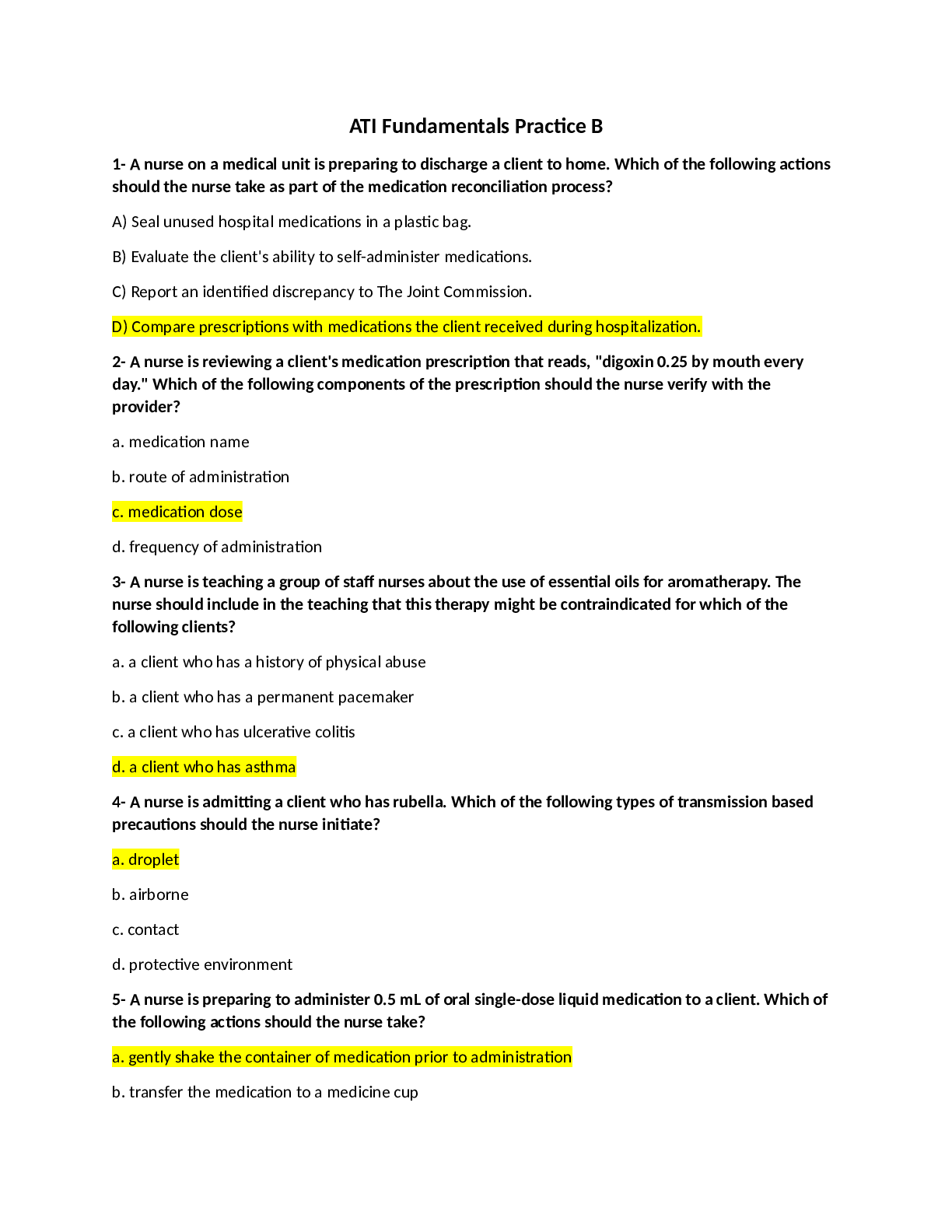
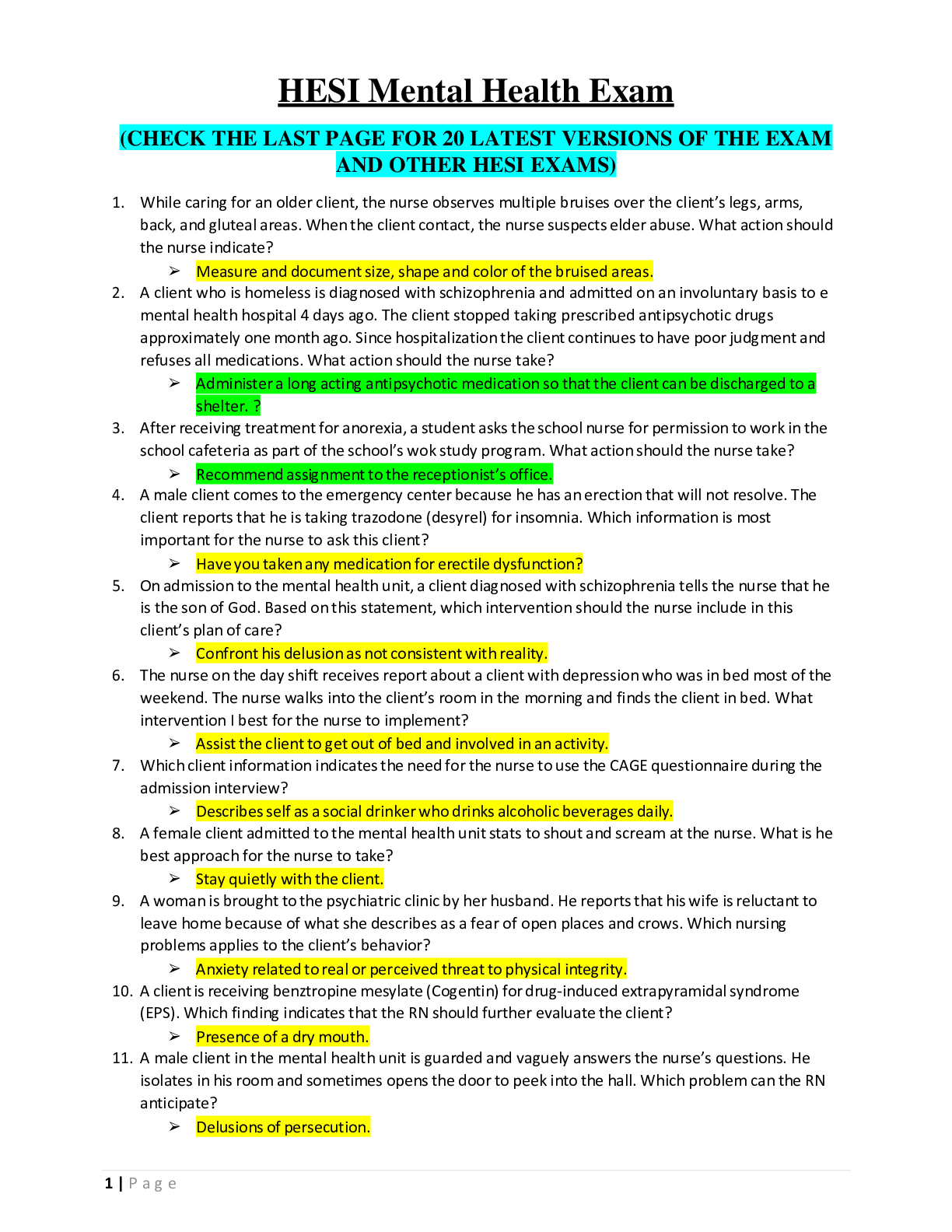

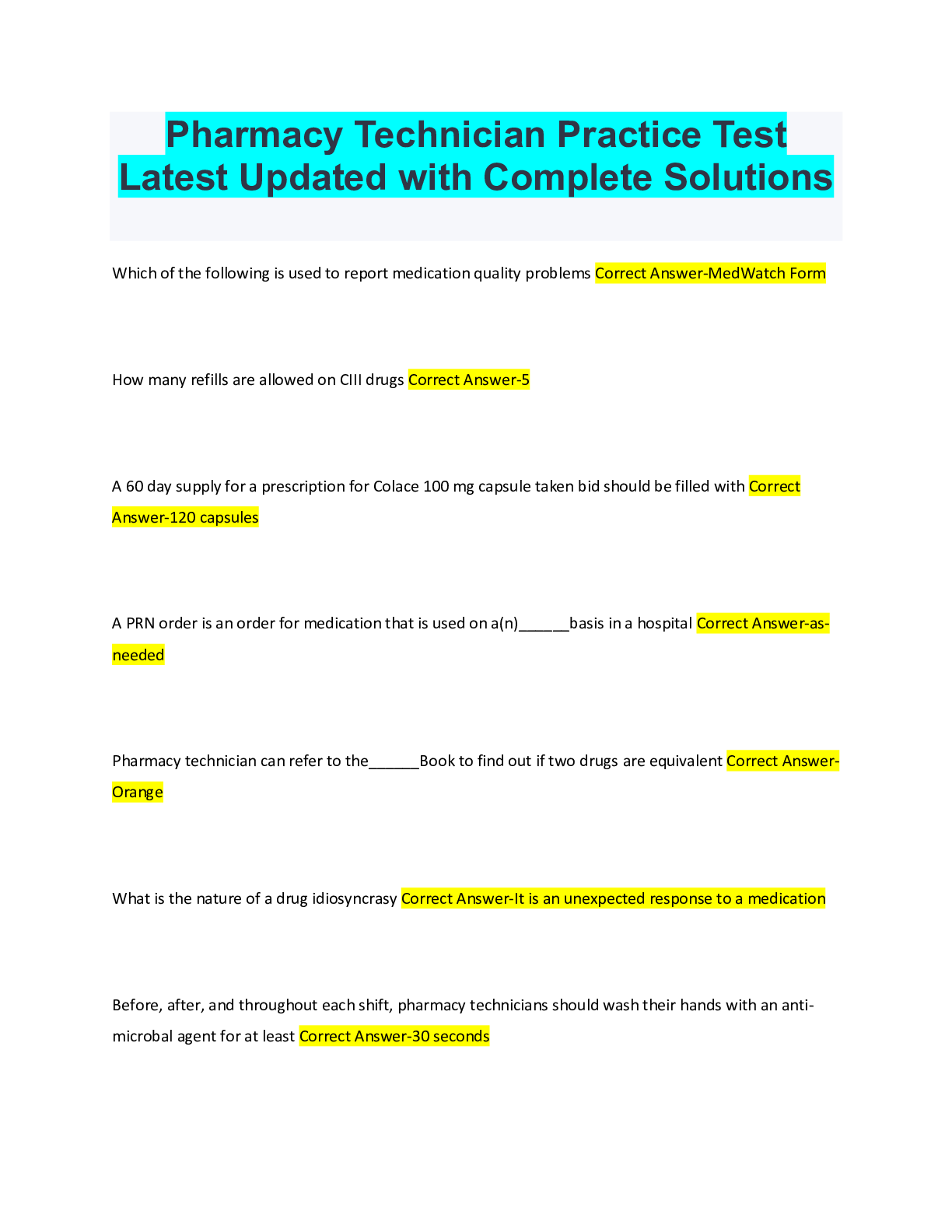


.png)
.png)
.png)

